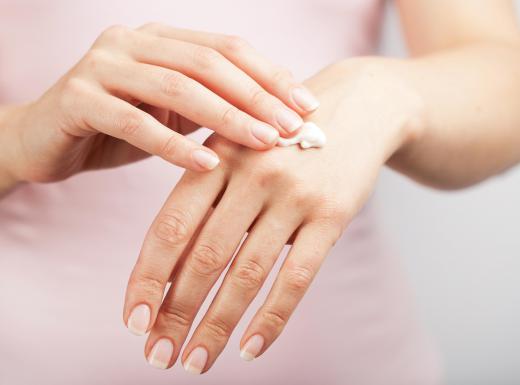Emulsion polymerization is a process for creating polymers, or linked groups of smaller chemical chains called monomers, in a water solution. The process is commonly used for creating water-based paints, adhesives and coatings where the water remains with the polymer and sold as a liquid product. An emulsion is a stable mixture of very small droplets of the monomer or polymer suspended in the water phase. One example of a stable emulsion is liquid hand lotion, which contains several different chemicals mixed in water but not reacting with it.
Many plastics and some rubber compounds are polymerized molecules. Small monomer chains are mixed with different chemicals that start the reaction, control the size of the polymer chains that form, and keep the mixture stable. Chemicals that control or start the reaction are initiators, those that control the polymer chains are modifiers, and emulsifiers keep the mixture as a stable emulsion.

An emulsion polymerization reaction occurs in water, and the monomer may have little or no solubility in water, which means it remains separate and does not dissolve. When the chemicals are mixed together well, the small droplets of monomer are spread evenly throughout the water phase, and remain that way due to the action of the emulsifier. Very small droplets of monomer begin to form, known as micelles, and are surrounded by the initiator and modifier molecules. Each monomer chain begins linking to others inside the micelle, until the monomer is gone.

The polymer chain length will affect both the properties of the water solution, and any dry film created from it. Manufacturers control these properties by varying the amounts of initiator and modifiers, as well as temperatures during the reaction. The goal of an emulsion polymerization is to create a paint or adhesive that maintains its properties over time and is easy to handle. Over-reaction can create very thick, viscous emulsions that may have industrial uses but are not welcomed by consumers.
Most final products are sold as water-based solutions. Concern over environmental and health hazards of solvents led to a growth of products from emulsion polymerization in the 21st century. Once applied as a coating, the polymer dries and cures and the water evaporates as an environmentally safe vapor. The reacted polymer can also be spray dried or in some cases filtered out of the water, but this is less common. Other types of chemical reactions can produce dry product more easily than from an water emulsion.
Synthetic or artificial rubber chemicals can also be produced in emulsion polymerization systems. Styrene-butadiene and nitrile rubber are two common synthetic rubbers produced from emulsion chemistry. Processing these products into a dry solid requires additional steps of washing and drying to remove the initiators or other chemicals. These materials can eventually degrade the rubber if not removed.
